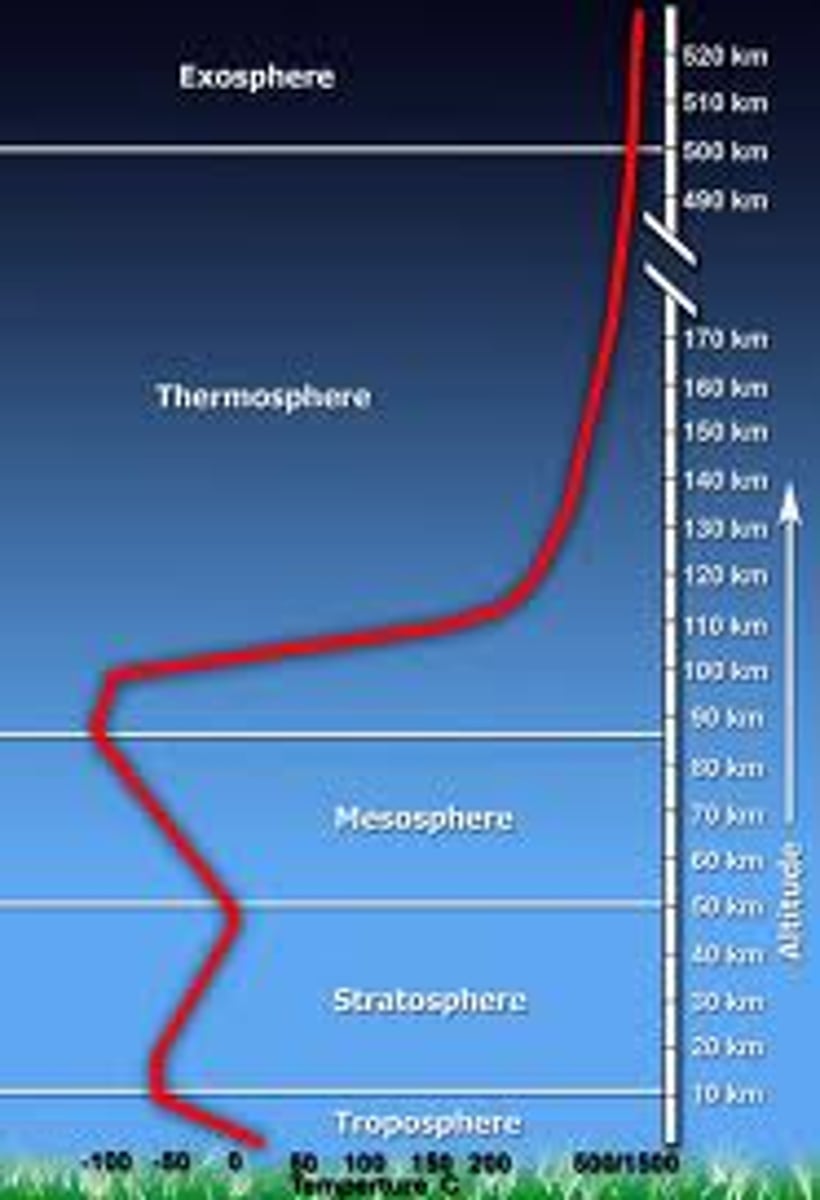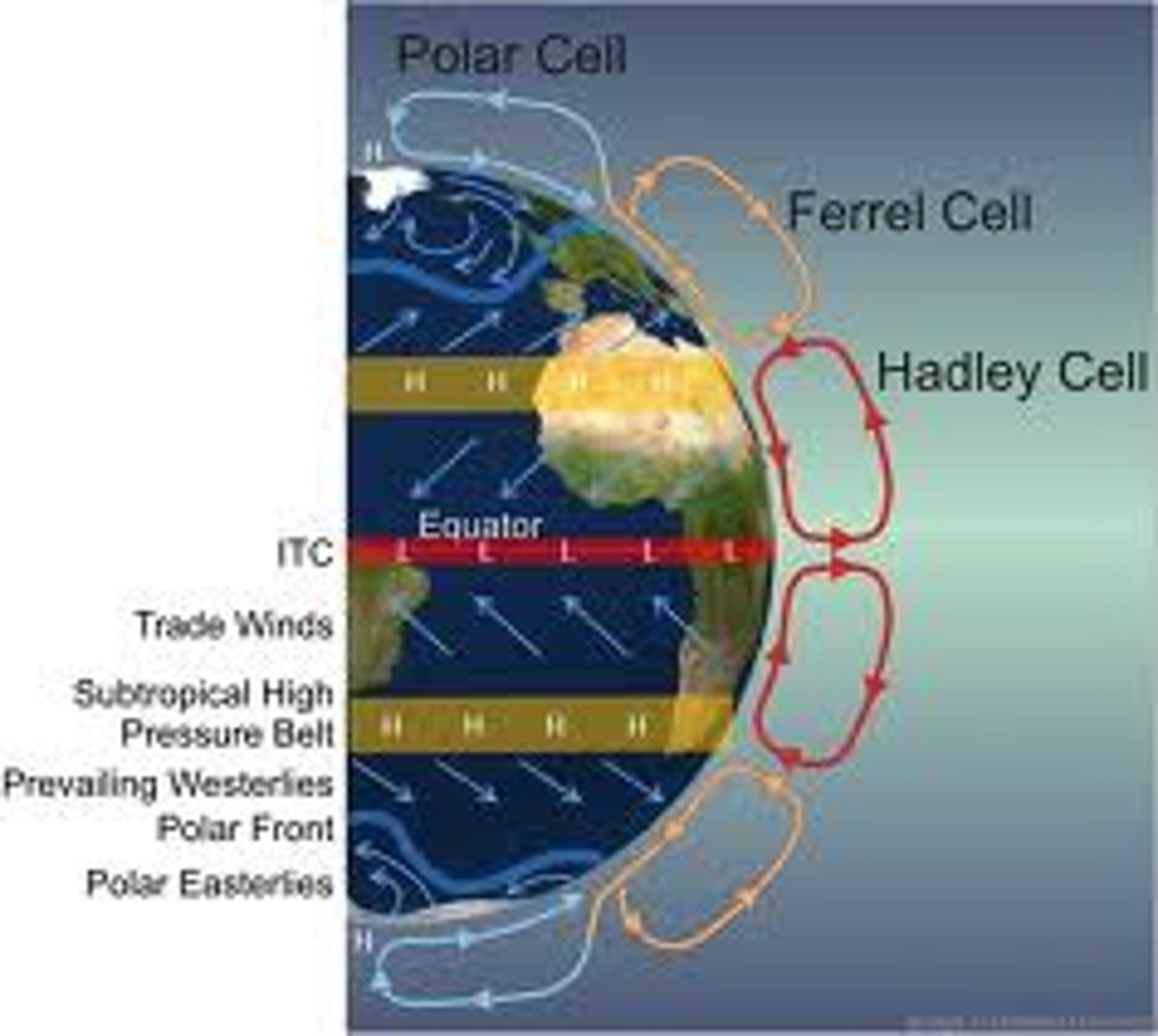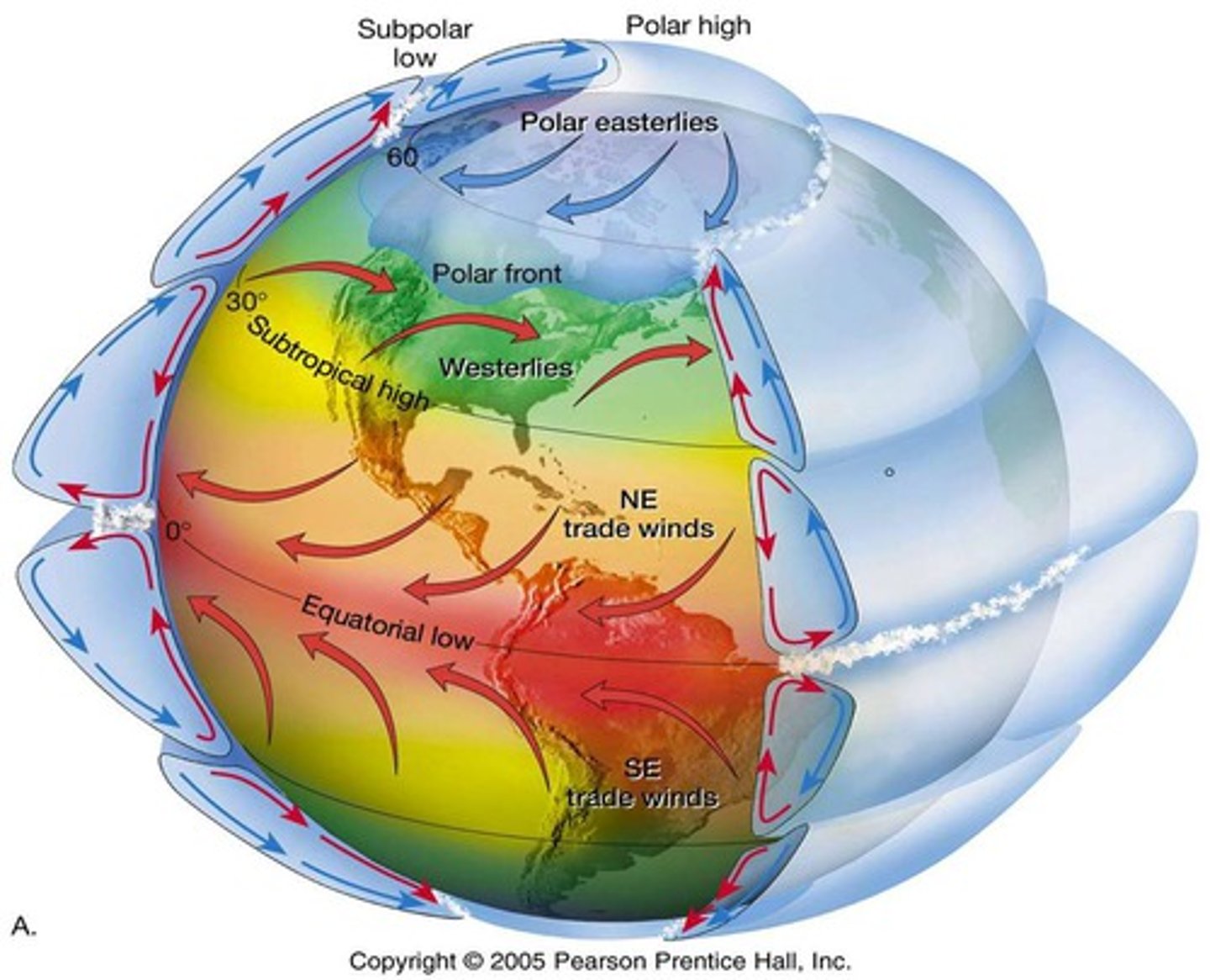ENV360 Exam 1 - Fall 2022
1/18
There's no tags or description
Looks like no tags are added yet.
Name | Mastery | Learn | Test | Matching | Spaced |
|---|
No study sessions yet.
19 Terms
Describe the different types of energy/heat transfer (i.e., Mechanisms for moving & storing heat energy) - convection, conduction, radiation.
Convection= Transfer of head through fluids (liquid and air.
Conduction= Transfer of heat from one molecule to another.
Radiation= Transfer of heat from sun to surface
Describe how the process of latent heat of vaporization and condensation can transfer heat energy from Earth's surface to the atmosphere.
Latent Heat= heat loss and gain due to phase change
As water evaporates, energy is sucked out of system into the now gaseous water vapor (evaporation is a cooling process) and as that air rises, it hits cold air temps which cause it to condense (dew point) which leads to that stored head being released into the atmosphere.
Latent heat powers storms.
Explain how radiant energy relates to temperature of a body. (Think about Stefan- Boltzman law and Wein's law - don't need to calculate anything, just know what laws are telling you about how temperature influences the total energy emitted from an object and the wavelength at which most of that energy is being emitted.)
Temperature dictates how much energy is being emitted (Stefan-Boltzman Law) and at what wavelength the radiant energy is at (Wien's Law)
Explain how (and why) atmospheric pressure changes with altitude.
Gravity pulls most of the air towards the surface, so as you move to higher altitudes, only a small amount of air is able to escape the pull and exist. This leads to less air, and more space in between the molecules and less collisions between air molecules and you (Air Pressure).
Label the different layers in the atmosphere.
Thermosphere
Mesosphere
Stratosphere
Troposphere

Name the layers of atmosphere that exhibit temperature inversions (temp decreases with increasing altitude).
Stratosphere and Thermosphere
Name the layer of atmosphere that contains our weather.
The troposphere
Name the layer of atmosphere that contains most our atmosphere's mass.
The troposphere
Describe what is meant by lapse rate, isothermal, and temperature inversion.
Lapse Rate= rate at which air temperature decreases with height
Isothermal= air temperature does not change with height
Temperature Inversion= air temperature increases with height
Be able to explain what relative humidity represents and how it is influenced (or not) by water vapor content and air temperature.
Relative Humidity (RH)= actual vapor pressure/saturation vapor pressure (or water vapor content/water vapor capacity)
Air is saturated when #of air molecules evaporating= #of air molecules are returning to body of water.
It is harder to saturate at high temperatures so saturation vapor pressure is determined by air temperature.
Warmer the air, lower the relative humidity.
Be able to explain Dew Point temperature and how it is influenced (or not) by water vapor content and air temperature.
Dew Point= Temperature that air needs to be cooled to for saturation to occur. Dew point is a good indicator of water vapor content. However, it is not determined by air temperature and stays constant.
Explain the difference between Environmental Lapse Rate (ELR), Dry Adiabatic Lapse Rate (DLR), and Saturated or Moist Adiabatic Lapse Rate (SLR).
Environmental Lapse Rate= actual rate that surrounding air cools at
Dry Adiabatic Lapse Rate= rate that an unsaturated parcel of air cools at
Moist Adiabatic Lapse Rate= rate that a saturated parcel of air cools at
Explain why the SLR is less that the DLR.
The SLR contains more water vapor and water has a high heat capacity, which means it takes more for it to loose or gain heat. Thus the water holds on to heat better, lowering the lapse rate
If given information about the ELR (and DLR, SLR) determine whether atmospheric conditions are absolutely stable, absolutely unstable, conditionally unstable, or neutral.
Absolutely Stable= ELR
Conditionally Stable= SLR
If given information about the ELR, DLR, SLR, and dew point temperature, be able to note the elevation at which clouds are like to develop (i.e., bottom of clouds), and whether parcel of air (that is forced upward) will continue to rise or sink back down to ground at different altitudes above the surface (Lab 2).
Clouds develop where the air temperature = dew point temperature. Parcel cools ad DLR below dew point, and SLR above dew point.
Explain how changes in surface heating (or cooling) change pressure at surface (and aloft) and how these pressure differences drive winds (e.g., air-sea breezes example, movement of air between two cities or warm and cool columns of air).
As the surface is heated, air rises leading to warm air aloft, and high pressure. If a nearby region is cooling, with sinking air and low pressure, then a force (pressure-gradient force) will force air to move from high to low, and low to high pressure.
Difference in temp=difference in pressure=pressure-gradient force=wind movement
Explain/describe/draw out the 3-cell model for global atmospheric circulation (e.g., Hadley, Ferrel, and Polar cells), and describe how cells transfer energy from the equator to the poles. Label latitudes of semi-permanent high and low surface pressure bands and at what latitudes clouds/precipitation is most likely to form (ICA 3).

Draw direction of surface winds (with deflection due to Coriolis force) on 3 cell model.
